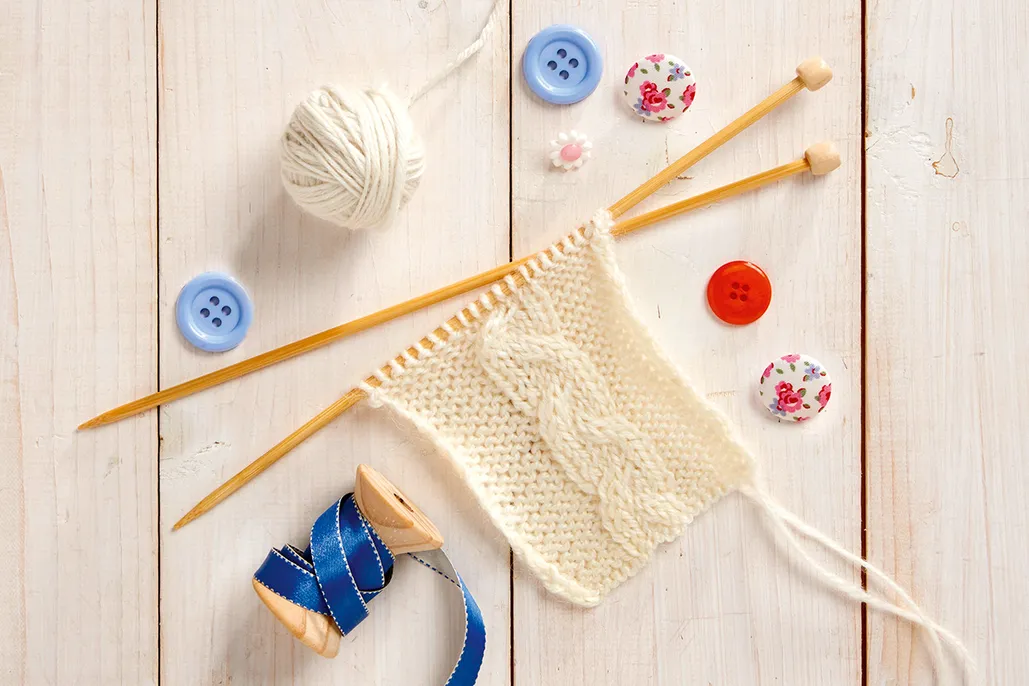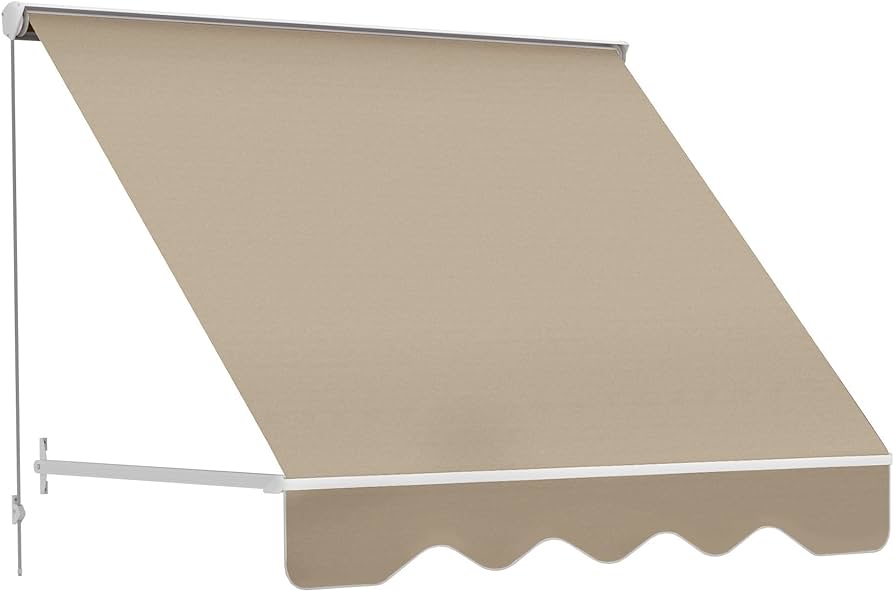To adjust knitting gauge, change needle size or yarn weight accordingly. This will alter the number of stitches per inch.
Knitting gauge is an important factor in any knitting project as it determines the size and fit of the final piece. However, sometimes the gauge might be off, resulting in a project that is too big or too small. Thankfully, there is a simple solution to this problem – adjusting the knitting gauge.
By changing the needle size or yarn weight, you can alter the number of stitches per inch and achieve the desired gauge. We will explore how to adjust knitting gauge effectively and ensure a successful knitting project. So, let’s dive in and learn how to make those necessary adjustments!
Understanding Knitting Gauge
Knitting gauge is an essential aspect of any knitting project. It refers to the number of stitches and rows in a given measurement. Understanding knitting gauge is crucial in achieving the correct size and fit of your knitted item. In this article, we will dive deeper into what knitting gauge is, why it is important, and how you can adjust it to ensure your knitting projects turn out just the way you want them to.
What Is Knitting Gauge?
Knitting gauge is the number of stitches and rows in a specific measurement of your knitting. It determines how tightly or loosely you are knitting. The gauge is typically measured in a 4-inch square, which is known as a swatch. By following a knitting pattern and using the suggested yarn and needle size, you can create a swatch to check your gauge.
Once you have your swatch, you count the number of stitches and rows within that 4-inch square. This measurement will give you an idea of how many stitches and rows you are knitting per inch. Knitting gauge can vary depending on factors such as your tension, the yarn you are using, and your needle size.
Why Is Knitting Gauge Important?
Knitting gauge is of utmost importance as it determines the final size and fit of your knitted item. Suppose you are knitting a sweater and your gauge is off. In that case, the sweater might end up being too tight or too loose, resulting in an ill-fitting garment that doesn’t match the measurements provided in the pattern.
By achieving the correct knitting gauge, you can ensure that your finished project turns out the way it is intended. It allows you to follow knitting patterns accurately and ensures that the size and proportions of your knitting piece are correct.
Additionally, knitting gauge is crucial for achieving consistency in your knitting. If you are working on a larger project that requires multiple balls of yarn, having the right gauge ensures that each section of your project has the same tension and uniform look.
How To Adjust Knitting Gauge
If your gauge doesn’t match the pattern’s suggested gauge, you may need to adjust it to ensure your project’s desired size and fit. Here are a few tips for adjusting your knitting gauge:
- Change your needle size: Using larger needles will result in fewer stitches and rows per inch, while smaller needles will produce more stitches and rows per inch.
- Adjust your tension: Holding your yarn tighter or looser while knitting can also affect your gauge. Experiment with different tension levels to achieve the desired gauge.
- Try a different yarn: Different yarns have varying thicknesses, which can impact your gauge. If your gauge is significantly off, consider using a yarn with a similar weight but a different fiber content.
Remember, it’s essential to create a swatch and measure your gauge before starting a project. This way, you can make any necessary adjustments and avoid disappointment or frustration down the line.

Credit: www.etsy.com
Factors Affecting Knitting Gauge
When adjusting knitting gauge, there are several factors to consider including needle size, yarn weight, and tension. By making small changes to these elements, you can achieve the desired gauge for your knitting project.
When it comes to knitting, achieving the right gauge is crucial for a successful project. Gauge refers to the number of stitches and rows in a specified measurement, and it can greatly impact the final size and fit of your garment. Understanding the factors that affect knitting gauge allows you to make adjustments to achieve the desired results.
Yarn Weight And Fiber Content
The first factor that affects knitting gauge is the yarn weight and fiber content. Yarn comes in various weights, from laceweight to super bulky, and each weight requires a different needle size to achieve the proper gauge. Thinner yarns generally require smaller needles, while thicker yarns need larger needles to create the right tension. Additionally, the fiber content of the yarn can affect stitch definition and elasticity, which in turn impacts the gauge. For example, natural fibers like wool tend to have more stretch and drape than synthetic fibers, resulting in variations in gauge.
Needle Size
The size of the needles you use also plays a significant role in knitting gauge. Needle size determines the size of your stitches, and changing needles can instantly alter your gauge. If your stitches are too tight and your gauge is smaller than required, switch to larger needles. Conversely, if your stitches are too loose and your gauge is larger than specified, change to smaller needles. Experimenting with different needle sizes allows you to find the perfect fit for your knitting project.
Tension And Relaxation
Tension and relaxation techniques while knitting are essential factors that affect gauge. The tension in your hands and fingers can impact the size of your stitches. If you find that your stitches are consistently tight, try relaxing your grip and allowing the yarn to flow more freely. On the other hand, if your stitches tend to be loose, try tightening your tension slightly to create more even stitches. Maintaining a consistent tension throughout your knitting ensures a consistent gauge.
In conclusion, several factors can influence knitting gauge, and it’s important to understand how each factor relates to achieve the desired results in your projects. By considering the yarn weight and fiber content, needle size, and tension and relaxation techniques, you can make the necessary adjustments to achieve the perfect gauge for your knitting projects.
Mastering Knitting Gauge Adjustment
Mastering Knitting Gauge Adjustment is a crucial skill for every knitter. Achieving the correct gauge ensures that your finished garments and projects turn out just as you envision them. In this section, we will explore the various techniques and strategies you can employ to adjust your knitting gauge effectively.
Swatching And Measuring
The first step in adjusting your knitting gauge is to swatch and measure your stitches per inch. This involves knitting a small sample using the pattern stitch, needles, and yarn you intend to use for your project. By measuring the number of stitches and rows within a standardized area, you can determine whether your gauge matches the pattern’s requirements.
To swatch effectively, follow these steps:
- Cast on a sufficient number of stitches to create a square of at least four inches in width and height.
- Knit a few rows in the pattern stitch.
- Continue knitting in the pattern stitch for enough rows to create a square.
- Measure the number of stitches and rows within a four-inch area in the center of your swatch.
Remember to block your swatch before measuring, as this can affect the final gauge. Comparing your swatch measurements to those specified in the pattern will determine whether your gauge adjustment is necessary.
Adjusting Needle Size
One of the easiest ways to adjust your knitting gauge is by changing the needle size. If your swatch reveals that your stitches per inch are too small, try switching to a larger needle. Conversely, if your stitches are too large, opt for a smaller needle size. Keep in mind that the needle size referenced in the pattern is just a starting point; you may need to experiment to find the ideal needle size for achieving the correct gauge.
When adjusting the needle size, be sure to swatch again with the new needles to ensure the desired gauge is achieved. Remember to use the same yarn and pattern stitch for accuracy.
Changing Yarn Weight Or Fiber Content
Another effective way to adjust your knitting gauge is by changing the yarn weight or fiber content. If your swatch indicates that your stitches per inch are too small, selecting a bulkier yarn can help. On the other hand, if your stitches are too large, opting for a finer yarn can yield the desired gauge.
Additionally, experimenting with different fiber contents may also impact your gauge. Natural fibers, such as wool or cotton, may have different properties and behaviors compared to synthetic fibers like acrylic or nylon. Keep in mind that certain fibers have a tendency to stretch or shrink when blocked, which can also influence your gauge.
Tension And Relaxation Techniques
Your tension, or how tightly you hold your yarn, can significantly impact your knitting gauge. To adjust your tension and achieve the desired gauge, consider the following techniques:
- Relax your grip on the yarn and needles, allowing them to move more freely.
- Practice consistent tension by consciously monitoring how tightly you pull your yarn after each stitch.
- Experiment with different knitting styles, such as continental or English, to find a method that feels comfortable for you.
Remember, adjusting your knitting gauge is a process of trial and error. By swatching, adjusting needle size, changing yarn weight or fiber content, and employing tension and relaxation techniques, you can achieve the perfect gauge for your knitting projects.

Credit: www.amazon.com

Credit: www.amazon.com
Frequently Asked Questions For How To Adjust Knitting Gauge
How Do I Adjust My Knitting Gauge?
To adjust your knitting gauge, try changing your needle size or yarn weight. Experiment until you achieve the desired stitch count per inch.
What Can Cause A Knitting Gauge To Be Too Tight?
Tension, needle size, or using thicker yarn than recommended can cause a knitting gauge to be too tight. You may need to loosen your tension or switch to a larger needle size or thinner yarn.
What Can Cause A Knitting Gauge To Be Too Loose?
A knitting gauge can be too loose due to loose tension or using thinner yarn than recommended. Make sure to maintain consistent tension and use the correct yarn weight to achieve the desired gauge.
How Do I Measure My Knitting Gauge?
To measure your knitting gauge, knit a swatch approximately 4×4 inches using the recommended yarn and needle size. Count the number of stitches and rows within that area to determine your gauge.
Conclusion
Adjusting knitting gauge is an essential skill for any knitter. By understanding how to manipulate tension, needle size, and yarn type, you can ensure your projects turn out just right. Remember to swatch, measure, and make necessary adjustments to achieve the desired gauge.
With practice and patience, you’ll be able to produce beautiful knitted items that fit perfectly. Keep experimenting and enjoy the process!


